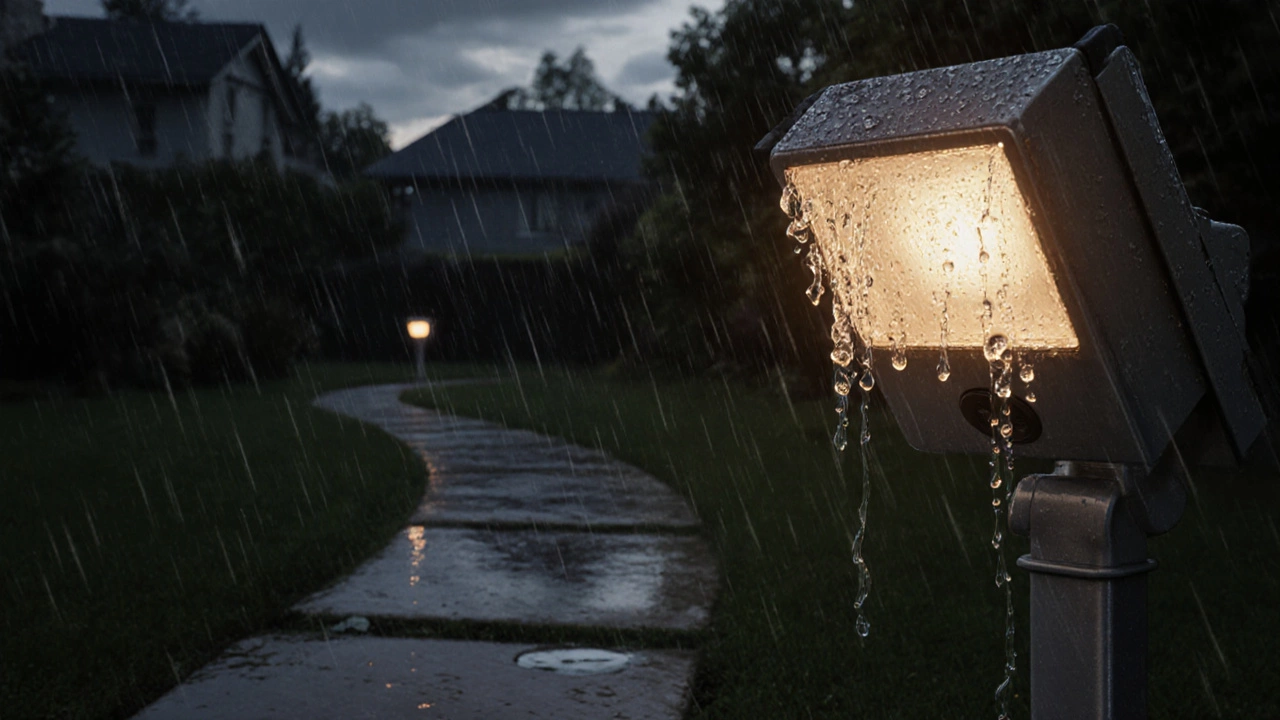When choosing Waterproof Lighting, fixtures built to withstand rain, snow, dust and direct moisture. Also known as weather‑proof lighting, it ensures reliable illumination in any climate.
Most homeowners think of Outdoor Lighting, the broad category that covers garden, pathway and patio lights first, but without proper waterproofing those lights can short‑circuit or dim quickly. The same goes for Security Lights, bright, motion‑activated fixtures that deter intruders. When you pair a security light with a high IP Rating, a numeric code like IP65 that tells you how well a product resists water and dust, you get a setup that works night after night, rain or shine.
Waterproof lighting isn’t just about a rubber seal. It’s a specific set of attributes that together deliver durability and performance. First, the IP rating tells you the protection level: IP65 means total protection against dust and water jets, while IP67 handles temporary immersion. Second, the power source matters – wired LEDs give consistent brightness, but solar‑powered units add energy savings and easy installation. Third, mounting method affects longevity; wall‑mounted fixtures need proper sealing around brackets, and pole‑mounted lights require corrosion‑resistant hardware. Together, these attributes form a reliable system for any outdoor setting.
Consider a typical garden pathway. You pick a Floodlight, a high‑output fixture used to illuminate large areas with an IP66 rating, mount it on a stainless‑steel pole, and power it with a solar panel. The floodlight’s waterproof design ensures it won’t flicker when a sudden downpour hits, while its high lumen output keeps the entire yard visible. This example shows how waterproof lighting encompasses floodlights, security lights, and ordinary garden lights under one durability umbrella.
Another common scenario involves a patio that hosts evening gatherings. You might choose warm‑tone LED bulbs that are IP44 rated – enough to handle occasional splashes from a nearby fountain. Because the bulbs are sealed, you avoid the dreaded “flicker‑and‑fail” problem that plagues cheap fixtures. The LED’s low power draw also means you can run it off a small solar battery, keeping operating costs low while still providing a welcoming glow.
When you pair waterproof lighting with smart controls, the benefits multiply. A motion sensor attached to a waterproof security light can trigger a bright flash only when movement is detected, saving energy during quiet nights. Some models even integrate with home automation platforms, letting you dim or change color temperature from your phone – all while the sealed housing protects the electronics from weather.
In short, waterproof lighting requires an appropriate IP rating, a suitable power source, and corrosion‑resistant mounting. It enables reliable illumination for pathways, driveways, decks, and commercial exteriors. By understanding these attributes, you can pick the right fixtures, avoid costly replacements, and keep your property safe and attractive year‑round.
The articles below break down these topics in detail. You’ll find guides on picking the right bug‑repellent light colors, comparing floodlights to security lights, and understanding IP ratings inside out. Whether you’re a DIY homeowner or a professional installer, the collection gives you practical tips, product recommendations, and step‑by‑step advice to get the most out of your waterproof lighting setup. Dive in and start building a lighting system that stands up to any weather challenge.

Learn how to keep outdoor lights working through rain with IP ratings, sealants, proper wiring, and easy maintenance tips.